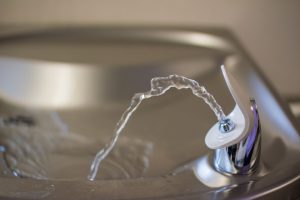Travel to any recent conference or trade show on produced water management and there’s a good chance you’ll hear this line or something similar. I’ve heard it myself, alongside claims that a patented treatment delivers water that’s “fresh” or “meets drinking water standards.”
This sort of talk is on the rise as operators and regulators look for ways to reuse produced water both inside and outside of the oilfield. Some of these uses carry real risks to human health and the environment from chemicals that may be present—even after treatment. At first blush, if the product can be called “fresh” or meets drinking water standards, it doesn’t sound risky. So why the worry? The reality is that these statements tell us very little about the quality of treated produced water.
“Fresh” from a scientific perspective, means next to nothing. And drinking water standards are simply the wrong standards to apply to produced water, or for that matter any treated wastewater – industrial or municipal. Here’s why.
Drinking Water Standards
Under the Safe Drinking Water Act, the Environmental Protection Agency sets national drinking water standards for public water systems to protect against exposure to potential contaminants. The act contains three key parts:
- A national list of contaminants that must be removed or reduced from drinking water (National Primary Drinking Water Regulations)
- A set of recommended standards to guide water systems in managing drinking water properties such as taste, color, and odor (Secondary Drinking Water Regulations)
- An ongoing process for development and review of these regulations, including a list that identifies contaminants that are known or anticipated to occur in public water systems, and that are worthy of further study but not currently subject to the primary or secondary regulations.
Establishing EPA’s primary list of contaminants and limits was a lengthy and complex process, and updating it has proven even more challenging. Today there are only 89 contaminants on this list and the bulk of it was established over 20 years ago. No new contaminant has been added to the primary regulations since that time. Not to mention some of the current contaminate levels may not be as protective as they should be based on what we know today. Lead is a recent and unfortunate example, where current standards were written based on reducing corrosion and not health.
Even if they aren’t perfect, federal drinking water standards are a good thing. They protect our drinking water sources from contaminants that we both expect to be present in drinking water systems, and have known for a long time are a problem for human health. However, drinking water standards don’t tell us much about produced water.
Produced Water
Produced water is the wastewater generated through oil and gas development. It can contain a wide range of potentially toxic chemicals and can be many times saltier than seawater. The oil and gas industry generates nearly a trillion gallons of produced water each year that is largely disposed of deep underground, away from communities and ecosystems. But this status quo on produced water disposal is on the verge of change.
EDF has written quite a bit about what we know, don’t know, and need to know about produced water. Improving our understanding of produced water chemicals and the potential risks to health and the environment is increasingly important as more proposals to treat and use produced water for things like crop irrigation or livestock watering continue to advance across the country. Proponents may tout new opportunities for water-scarce regions, but the risks associated with these new proposals are real, significant and compounded by the fact that we simply do not fully understand what’s in produced water.
Even where these projects gain interest, regulators and communities must be able to make fully informed decisions about produced water use. That means having the data necessary to establish protective standards and appropriate monitoring requirements. It will be no easy task.
A Red Herring
Applying drinking water standards to the reuse or release of produced water is a red herring. Just look at ethylene glycol, the main ingredient in antifreeze, which is toxic to humans and animals. It’s one of the top 10 most used chemicals in hydraulic fracturing – repeatedly showing up in produced water, but it is not on the National Primary Drinking Water Regulation list.
That means treated produced water could meet drinking water standards even where ethylene glycol is present. In fact, that statement is true for well over 2,000 chemicals used in hydraulic fracturing or found in produced water onshore in the United States. The same concept applies to using a term like “fresh,” which in a legal sense only addresses the level of dissolved solids like salt in a water – not other pollutants.
Standards for oil and gas wastewater need to consider the actual chemicals potentially present (at least what we know about them today) and their impacts on surrounding environments, organisms, and people. But it’s hard to set regulatory standards without solid data. We need standards to ensure that if these new practices are implemented, they won’t pose an unnecessary – or poorly understood – risk to human health or the environment. This means we need more science and further study of produced water.
Inferring any industrial wastewater can be treated to a level that is safe to drink is farfetched and misleading, as is using drinking water standards more generally as a standard to judge a new treatment system. More care needs to be given to the language used in describing the quality of this wastewater, even after treatment. We need to have an honest and transparent discussion about what we know about produced water, what we are capable of achieving with advanced treatment technologies, and what the risks are given the unknowns.
Until we know more, I’m definitely not drinking it.
[Tweet “Why drinking water standards are the wrong standards for oil and gas wastewater”]










